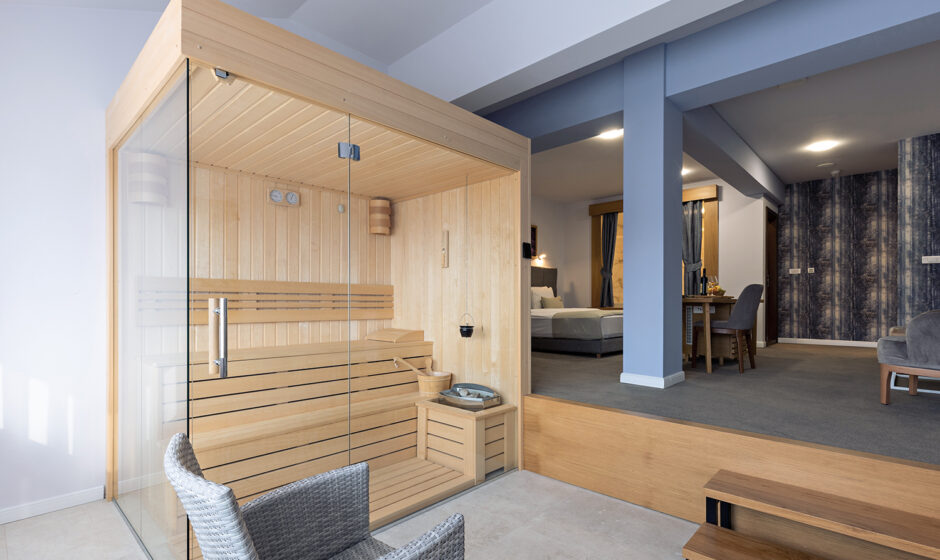Increases interest in installing bathhouses and saunas directly in their apartments. Well, everything is real! We tell you how to organize a bathhouse at home.
What types of saunas are there?
The main difference is the operating temperature and humidity level.
- Finnish sauna – in it, the temperature can reach 120 ° C, and the humidity does not exceed 20%.
- Russian bath – where the temperature is much lower, 50–70 °C, and the humidity is higher, 80–90%.
- A Turkish bath, or hammam, is almost cool in such a bath, the temperature does not exceed 50 °C, and the humidity is one hundred percent.
Now the bad news: none of these bathhouses are suitable for your apartment. Finnish is simply dangerous due to high temperatures: if something happens, those around you will help you, at home you may find yourself completely alone. The hammam and the classic Russian steam room “under a broom” will become a source of dampness and mold if the ventilation is insufficient.
Sauna that can be installed in an apartment
Not requiring housing redevelopment
Sauna cabins with household electric stone stoves for one or two people are capable of operating in two modes:
- Dry-air (Finnish) sauna with a temperature of 75–90 °C and a humidity of 5–30% – under such conditions the maximum healing effect is achieved without the risk of heat stroke. The regime is good for those who are actively involved in sports.
- Wet sauna – operates at a temperature of 60–75 °C and a humidity of 50–65%. This microclimate is close to the Russian bathhouse. Suitable for those who want to warm up and relax.
The sauna cabin can be installed anywhere in the apartment. True, if you chose for this, not a bathroom with waterproofing and a drain (a special device that is made if the water in the shower is not drained using a tray, but directly onto the floor), but a hallway, you will not be able to water the stones. We will have to limit ourselves to dry air procedures.
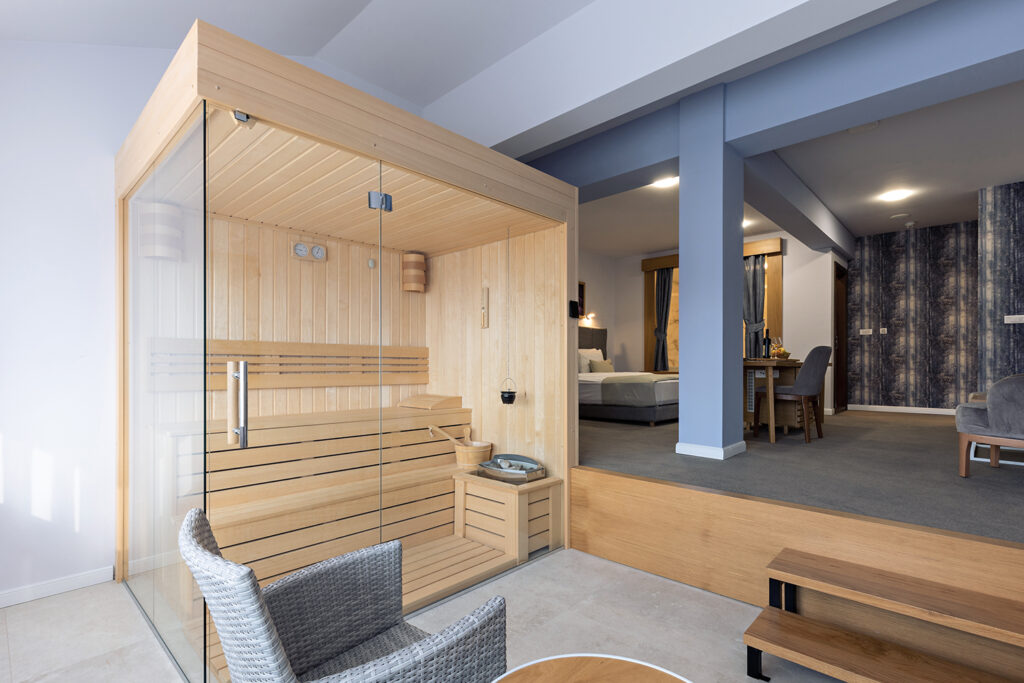
But there is a question: how legal is such an installation? Mostly it is not prohibited, but it is not allowed either. On the one hand, we do not violate building regulations: we simply brought and assembled a cabin the size of a large wardrobe in the apartment and connected it to an electrical outlet. But each country has its laws. You need to check it first at your location.
On the other hand, such a sauna, made at home or by an unscrupulous manufacturer, is not flawless from the point of view of electrical and fire safety.
Secondly, we don’t disturb public order, don’t organize noisy bathhouse parties, and don’t flood our neighbors downstairs. Remember that they are the ones who usually initiate inspections and lawsuits regarding illegal redevelopment.
In addition, when installing a cabin with an electric heater, problems with electrical power may arise. For such a sauna, 2.3–5 kW is required. In a modern home, there are usually no problems with this. But if the house is old and the wiring is weak, then allocating additional energy capacity can become an insurmountable obstacle.
IR saunas are the same cabins, but equipped not with a stove, but with infrared heating panels-emitters. They warm up not the air, but your skin. Therefore, it is easy to breathe in an infrared sauna. It feels as if you are basking in the tropical evening sun, with cool air blowing in from the sea. Only here there is no dangerous ultraviolet radiation and the possibility of getting burned.
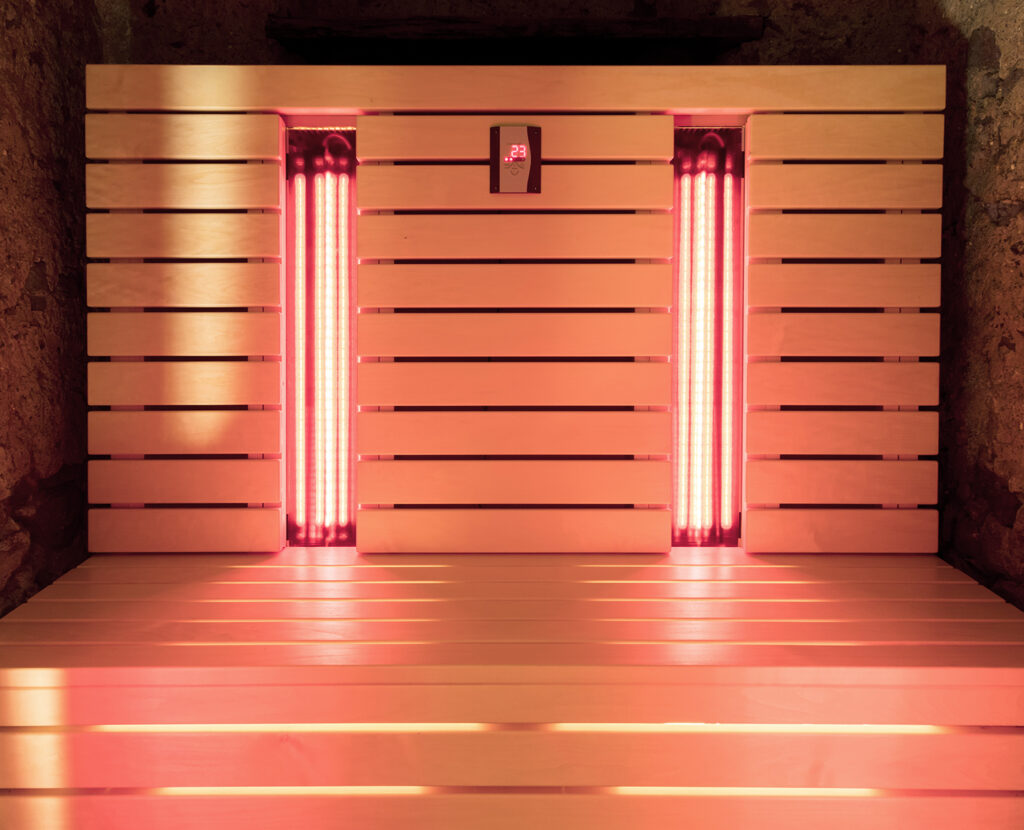
There is a nuance: this procedure is unusual for a conservative bathhouse attendant. Therefore, if you want to “try on” such a bathhouse, take it for a test: visit a spa salon with an infrared cabin.
IR saunas also come in the form of vertical barrels or cabinets with a window for the head in the upper part. You can’t massage your body with a broom, but the steam generator allows you to load an aromatic herbal mixture: soothing, tonic, or medicinal.
A compact infrared sauna and barrel cabin can be brought and assembled anywhere in the apartment. But we still recommend placing it in the bathroom or in the part of the hallway adjacent to it, if the area of the premises allows it. Installation of these saunas does not require approval.
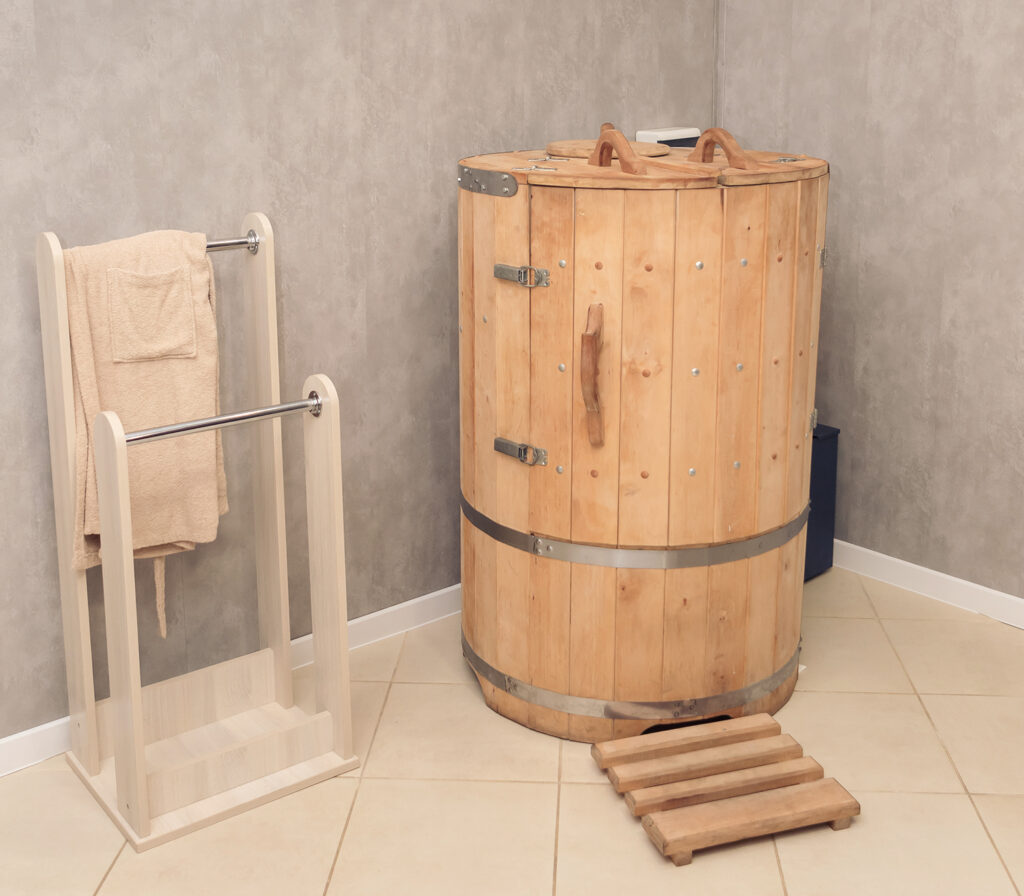
If there is not enough energy capacity for a cabin with an electric heater, an infrared sauna becomes the only possible simple option: in an area of 1 x 2 m, which can accommodate two people, infrared panels of 1.5–2.5 kW are sufficient.
Built-in sauna
Apartments from developers that already have premises of about 4 square meters are common on the market. m – specifically for the sauna. They are usually separated from the bathroom by a glass door and have the following parameters that allow you to organize a full-fledged steam room:
- area – from 3.5 sq. m
- power single or three-phase electrical outlet with grounding
- waterproofed floor with drain
- individual ventilation duct
Owners of spacious two-room apartments, three-room apartments, and multi-room apartments without premises for a sauna have the opportunity to make redevelopment. True, the standards in this regard are, to put it mildly, confusing, and approval of the restructuring is not a quick matter.
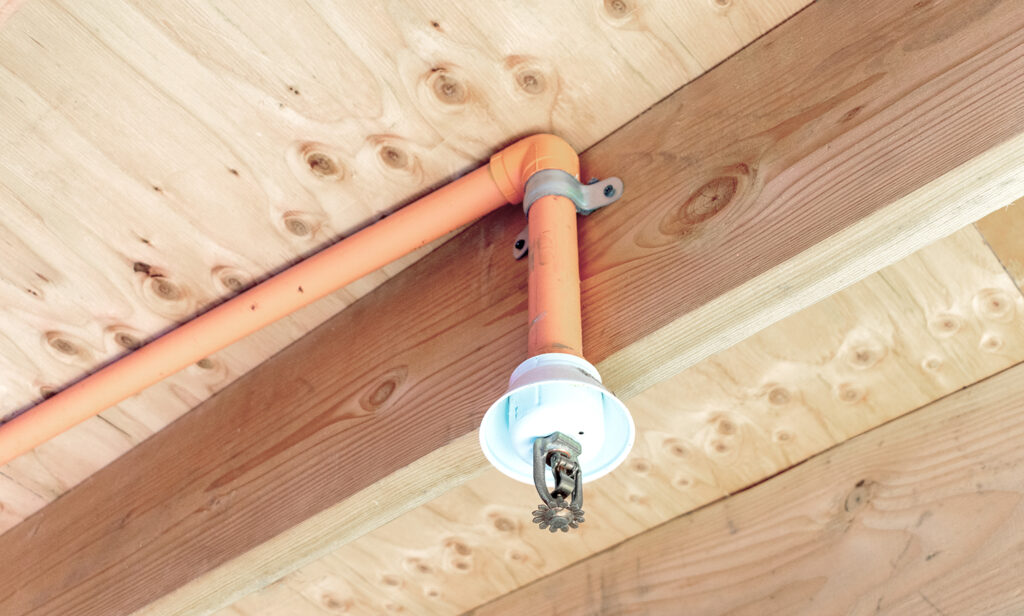
You should also remember about the general rules of redevelopment that cannot be violated, otherwise, you will not be able to obtain permission to install:
- Bathrooms and toilets (and, accordingly, the adjacent sauna rooms) cannot be expanded at the expense of kitchens and living rooms. But you can use part of the hallway.
- Wet areas (that is, kitchens, bathrooms, and saunas) cannot be located above the living quarters of neighbors below.

